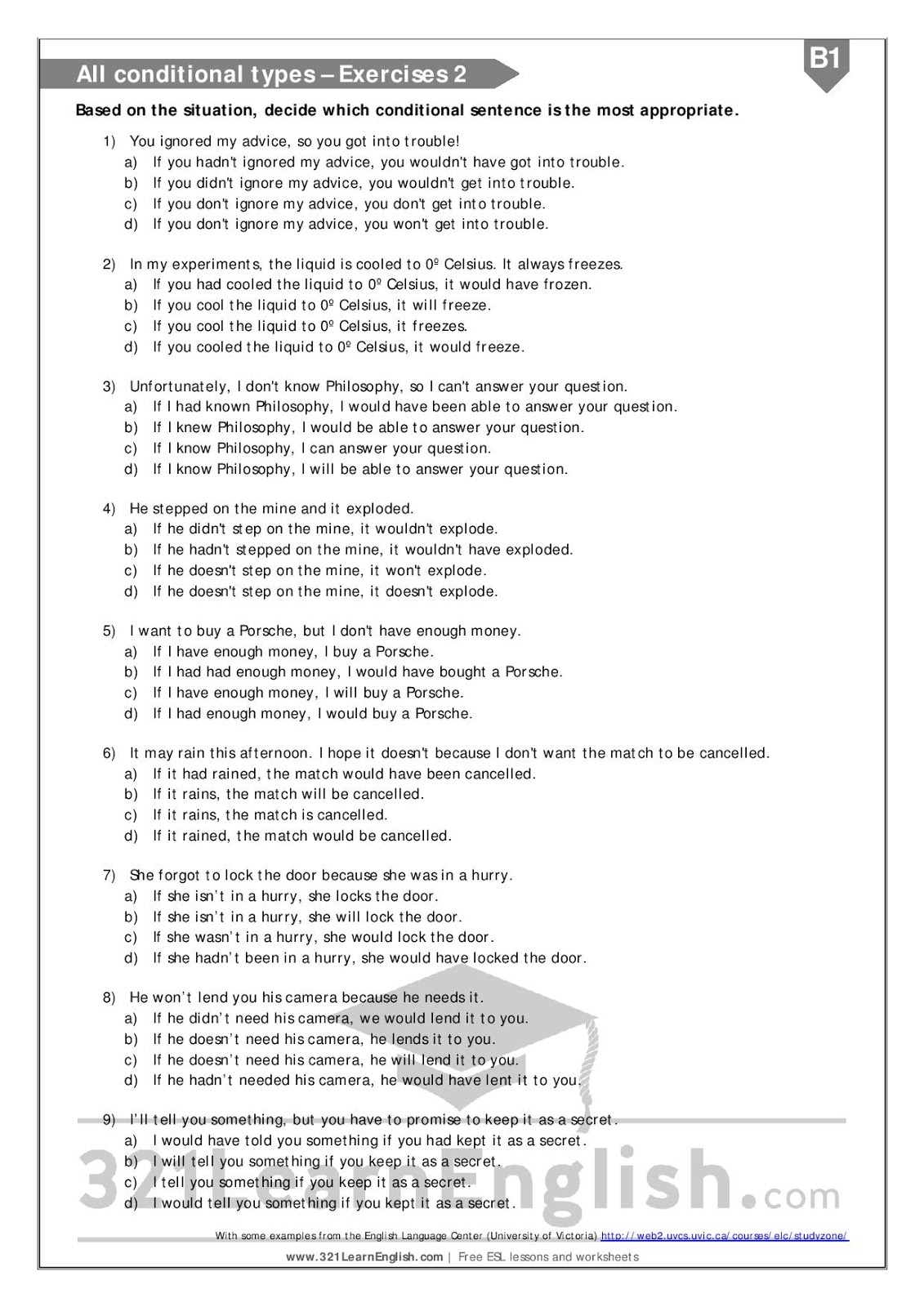Conditional sentences are used to express hypothetical situations and their possible outcomes. There are four main types of conditional sentences, each with its own structure and usage. In order to effectively use conditional sentences, it is important to practice and familiarize yourself with the different types through exercises.
By practicing conditional sentences exercises, you can improve your understanding and fluency in using them in everyday conversations and written communication. These exercises will help you differentiate between the different types of conditional sentences and choose the correct structure based on the context.
Type 1: Present Real Conditional Exercises
1. If it rains, I _________________ my umbrella. (take)
2. If she studies hard, she _________________ the exam. (pass)
3. If you hurry, you _________________ the bus. (catch)
Type 2: Present Unreal Conditional Exercises
1. If I were rich, I _________________ a big house. (buy)
2. If she had more time, she _________________ the project. (complete)
3. If he spoke English fluently, he _________________ a job abroad. (get)
Type 3: Past Unreal Conditional Exercises
1. If I had known, I _________________ you. (help)
2. If she had listened to me, she _________________ the mistake. (avoid)
3. If they had arrived on time, they _________________ the train. (catch)
Mixed Conditional Exercises
1. If he had studied harder, he _________________ the exam. (pass) (Type 3)
2. If she had not missed the bus, she _________________ late for work. (not be) (Type 2)
3. If it rains tomorrow, I _________________ my umbrella. (take) (Type 1)
By practicing these exercises regularly, you will become more confident in using conditional sentences in various situations. Remember to pay attention to the verb tenses and structures used in each type of conditional sentence. With dedication and practice, you will master the art of using conditional sentences effectively.
